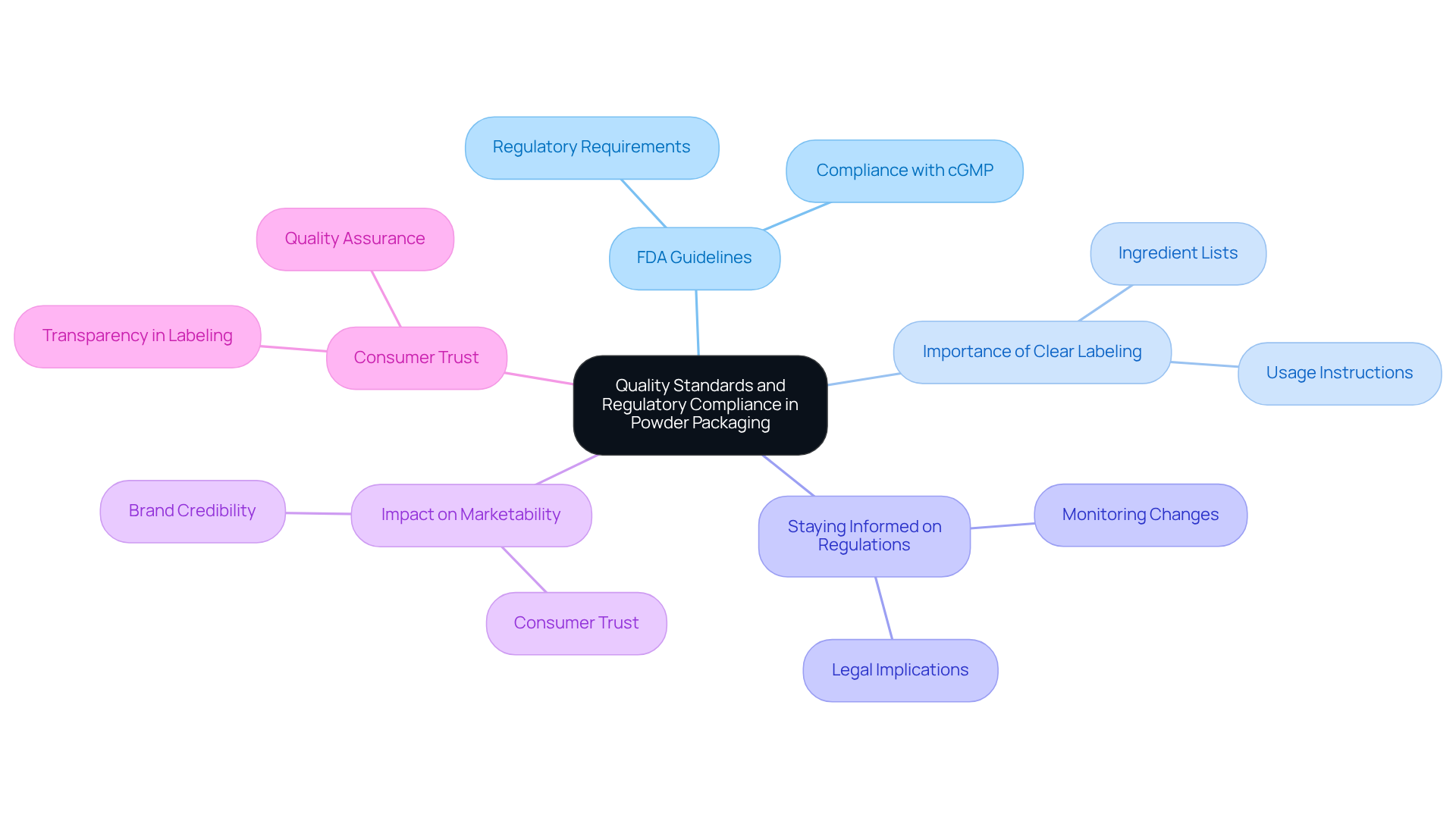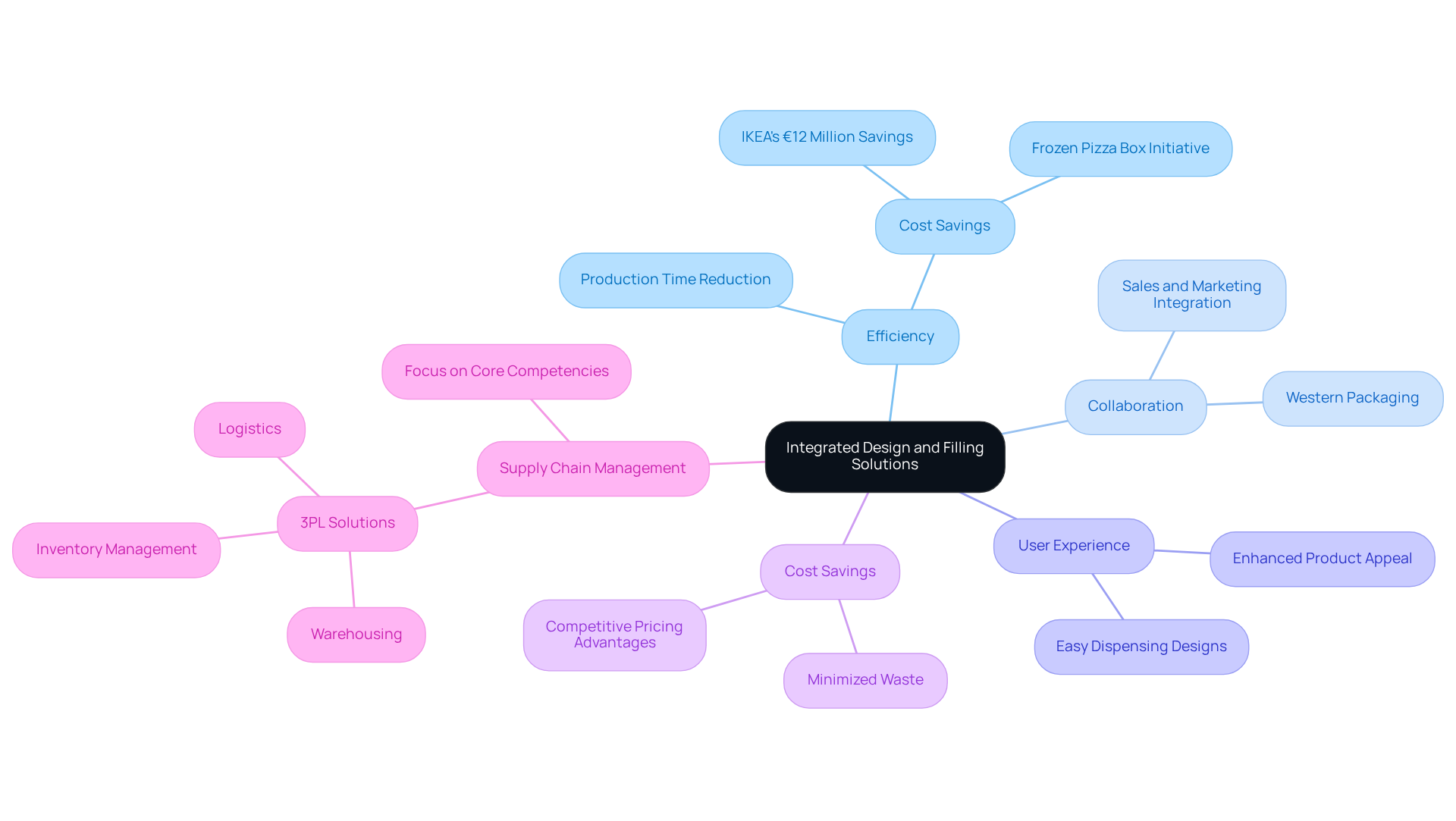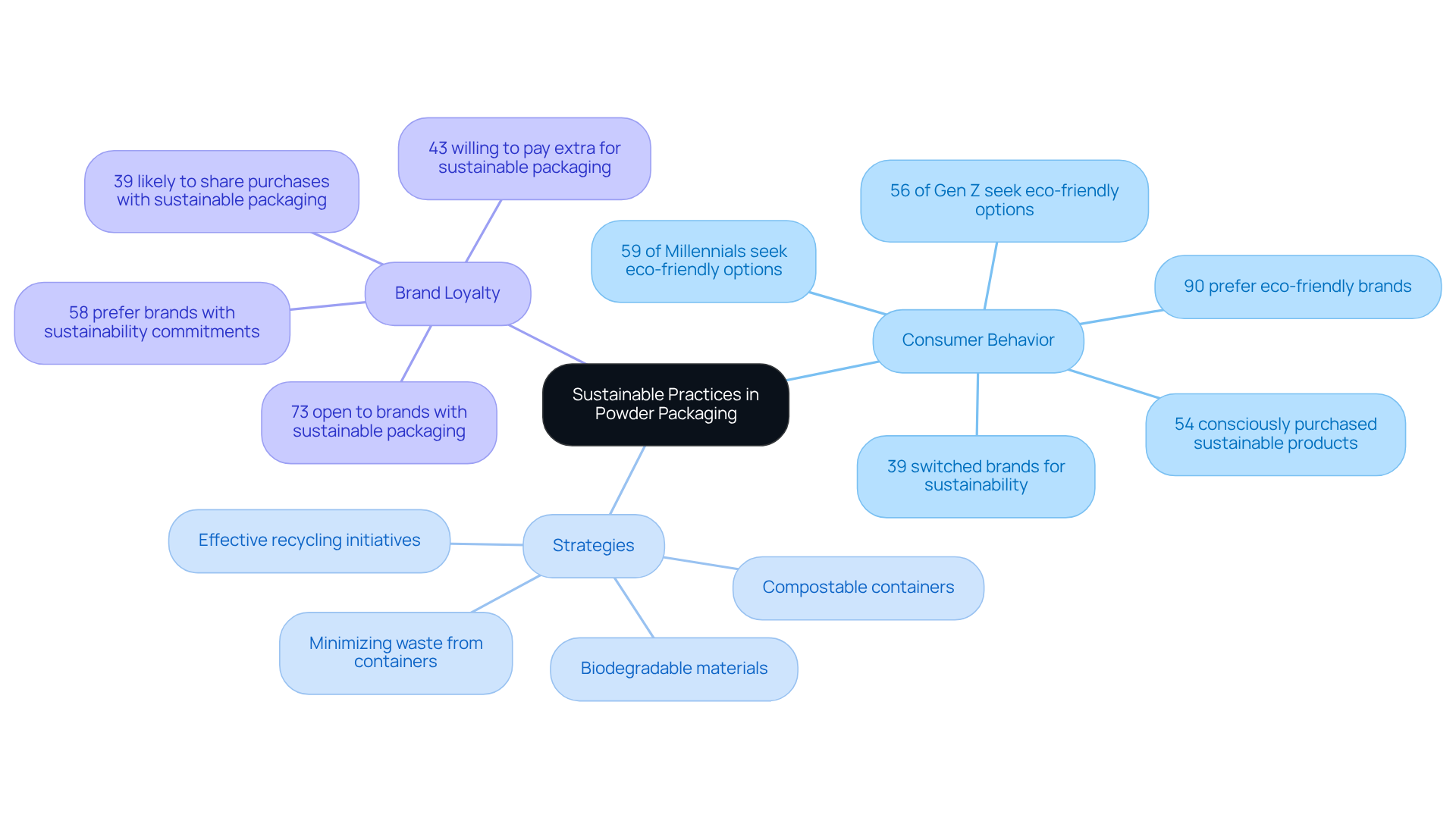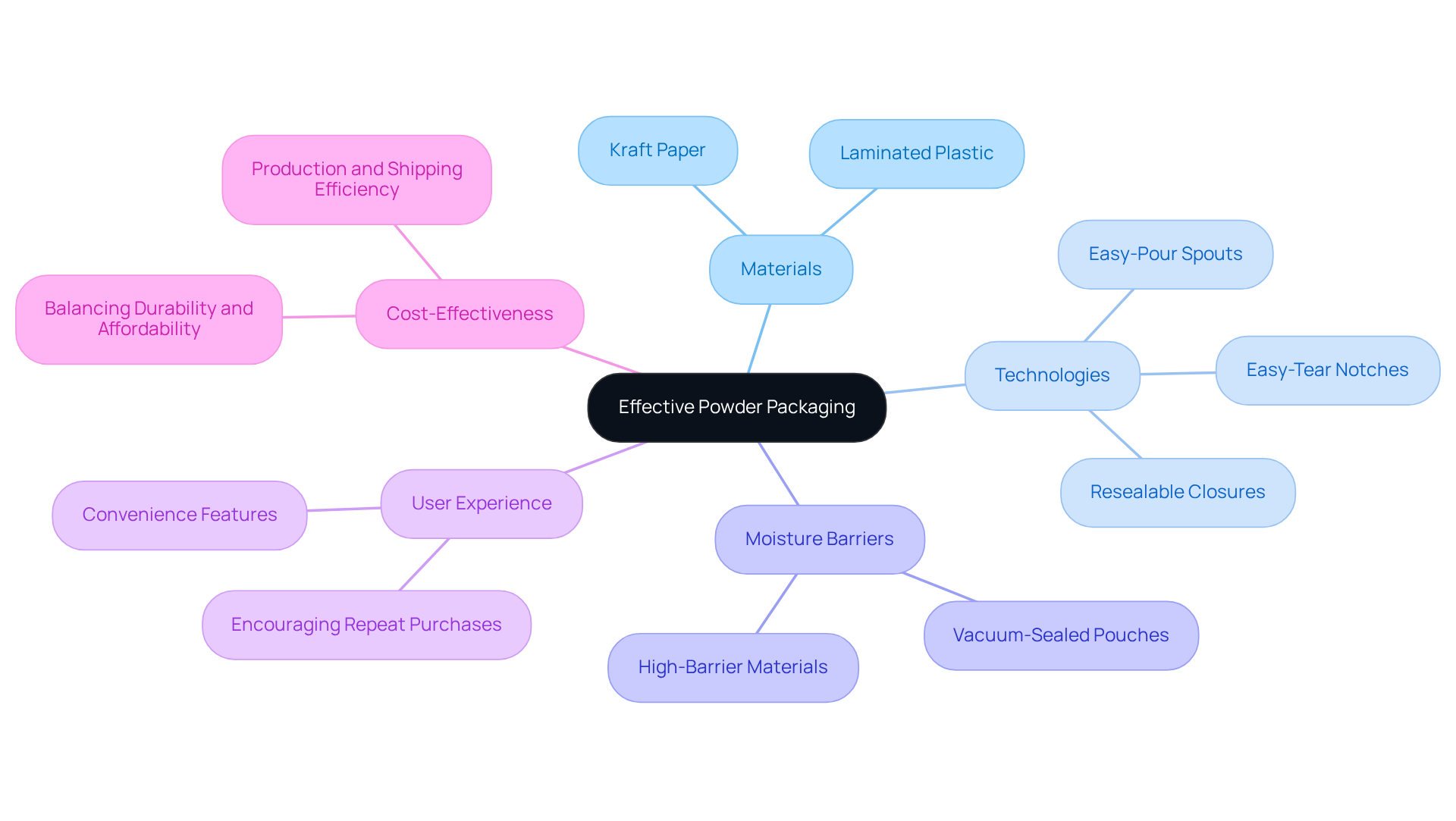Overview
The article delineates four pivotal strategies for the effective packaging of powders. It underscores the significance of:
- Regulatory compliance
- Integrated design and filling solutions
- Sustainable practices
- The careful selection of appropriate materials and technologies
Each strategy is reinforced by pertinent examples and data, illustrating how they bolster product quality, enhance consumer trust, and elevate brand value. Consequently, these elements collectively ensure marketability and customer satisfaction.
Introduction
Navigating the complexities of powder packaging necessitates a profound understanding of regulatory standards alongside innovative practices. Manufacturers are increasingly challenged to meet quality benchmarks while simultaneously enhancing consumer trust. In this context, the intersection of compliance, design, and sustainability emerges as a pivotal focus. How can brands effectively balance these critical elements to not only safeguard their products but also elevate their market presence in an eco-conscious landscape? This article explores four key strategies designed to redefine the approach to powder packaging, ensuring both product integrity and consumer satisfaction.
Understand Quality Standards and Regulatory Compliance in Powder Packaging
To effectively package powders, understanding the relevant quality standards and regulatory requirements is crucial for packaging for powders. Familiarizing yourself with guidelines set by organizations such as the FDA and other regulatory bodies governing dietary supplements is essential. Adherence to these standards not only safeguards your product but also communicates vital information to consumers, including ingredient lists and usage instructions.
For example, clear labeling that complies with regulatory standards can significantly enhance consumer trust and bolster brand credibility. Staying informed about changes in regulations is imperative to prevent potential legal complications and ensure your offerings remain marketable. In 2025, compliance with FDA guidelines is projected to be a pivotal factor for companies seeking to maintain marketability and avoid legal issues.
Recent updates in dietary supplement container regulations underscore the necessity for manufacturers to remain vigilant and adapt their practices accordingly. Expert insights indicate that proactive engagement with these standards is fundamental for success in the nutraceutical sector, as it directly influences product integrity and consumer confidence.

Implement Integrated Design and Filling Solutions for Optimal Packaging
A cohesive method for design and filling significantly enhances the efficiency of powder containment. By fostering collaboration between container design teams and filling service providers, businesses can devise solutions that not only fulfill functional requirements but also resonate with branding objectives. For instance, innovative designs that enable easy dispensing can greatly elevate user experience, resulting in heightened customer satisfaction and increased repeat purchases.
Furthermore, the synergy between filling processes and packaging for powders can significantly reduce production time and minimize waste, resulting in substantial cost savings. Firms such as Western Packaging exemplify this approach by delivering integrated solutions that seamlessly address both design and filling needs, ensuring products are market-ready more effectively. Their comprehensive services encompass filling for substances, gummies, and soft-gels, along with extensive 3PL solutions that include warehousing, inventory management, and logistics.
This optimization of supply chain management empowers manufacturers to concentrate on their core competencies. Ultimately, this integrated approach not only streamlines operations but also enhances the overall appeal of the product, delivering tangible benefits to the bottom line.

Adopt Sustainable Practices in Powder Packaging to Enhance Brand Value
Incorporating sustainable methods into packaging for powders not only benefits the environment but also significantly enhances the brand value. As public awareness of environmental issues grows, brands prioritizing sustainability can secure a competitive advantage. For instance, nearly 90% of buyers are more inclined to purchase from brands utilizing eco-friendly materials, with 54% having deliberately chosen such products in the past six months. Moreover, 39% of consumers have switched to a competitor offering eco-friendly options, underscoring the competitive edge of adopting these practices. This trend is particularly pronounced among younger demographics, with 59% of Millennials and 56% of Gen Z actively seeking eco-friendly choices.
Employing biodegradable materials, minimizing waste from containers, and implementing effective recycling initiatives are essential strategies for brands, particularly in their packaging for powders, aiming to attract environmentally conscious consumers. Brands that adopt compostable containers not only meet customer demand but also foster greater loyalty. Furthermore, effectively communicating sustainability efforts through marketing channels is vital, as 58% of consumers prefer brands that have publicly committed to sustainability goals. As sustainability increasingly influences purchasing decisions, brands embracing these practices are likely to experience enhanced loyalty and a stronger market presence.

Select Appropriate Materials and Technologies for Effective Powder Packaging
Selecting appropriate materials and technologies for substance containment is crucial for upholding product quality and enhancing user experience. Moisture barrier properties are particularly significant, as they mitigate exposure to environmental factors that could jeopardize quality. High-barrier materials, such as laminated plastic or kraft paper with film lining, excel in containing substances by effectively shielding against moisture and air exposure. For example, vacuum-sealed pouches serve as excellent packaging for powders, as they can substantially extend shelf life by protecting the contents, with studies showing that this type of packaging for powders can prolong freshness by several weeks compared to traditional methods.
Integrating user-friendly technologies—like resealable closures, easy-pour spouts, and easy-tear notches—further enriches the experience for consumers. These features not only provide convenience but also encourage repeat purchases by making the product more accessible and enjoyable to use. Packaging specialists emphasize that efficient moisture barriers are vital in the packaging for powders, preserving their freshness and effectiveness, and ensuring they remain appealing to consumers.
By investing in high-quality materials and innovative packaging for powders, brands can effectively safeguard their products while simultaneously boosting market appeal and fostering customer loyalty. Moreover, striking a balance between durability and affordability in packaging design is essential to guarantee that the selected materials satisfy both performance and cost-effectiveness criteria.

Conclusion
Understanding the intricacies of effective packaging for powders is essential for businesses aiming to thrive in a competitive marketplace. This article has explored four key strategies that not only ensure compliance with regulatory standards but also enhance product integrity and consumer trust. By focusing on quality standards, integrated design solutions, sustainable practices, and appropriate material selection, brands can significantly elevate their packaging game.
The discussion highlighted the importance of adhering to regulatory requirements, as this fosters consumer confidence and safeguards product quality. Integrated design and filling solutions streamline operations and improve user experience, while sustainable practices emerge as a critical factor in attracting environmentally conscious consumers. Additionally, selecting the right materials and technologies is vital for maintaining product freshness and enhancing user satisfaction.
As the market continues to evolve, embracing these strategies will bolster brand reputation and drive customer loyalty. Companies are encouraged to prioritize these best practices in their packaging processes, ensuring they remain competitive and relevant. Ultimately, effective powder packaging is not just about containment; it reflects a brand's commitment to quality, sustainability, and customer satisfaction, paving the way for long-term success in the industry.
Frequently Asked Questions
Why is it important to understand quality standards and regulatory compliance in powder packaging?
Understanding quality standards and regulatory compliance is crucial for effectively packaging powders as it helps safeguard products, ensures clear communication of vital information to consumers, and enhances brand credibility.
Which organizations set the guidelines for packaging powders?
Guidelines for packaging powders are set by organizations such as the FDA and other regulatory bodies governing dietary supplements.
How does clear labeling impact consumer trust?
Clear labeling that complies with regulatory standards significantly enhances consumer trust and bolsters brand credibility by providing essential information, including ingredient lists and usage instructions.
What should manufacturers do to avoid legal complications related to packaging?
Manufacturers should stay informed about changes in regulations and adapt their practices accordingly to prevent potential legal complications and ensure their products remain marketable.
What is projected to be a pivotal factor for companies in 2025 regarding powder packaging?
Compliance with FDA guidelines is projected to be a pivotal factor for companies seeking to maintain marketability and avoid legal issues in 2025.
Why is proactive engagement with quality standards important for manufacturers in the nutraceutical sector?
Proactive engagement with quality standards is fundamental for success in the nutraceutical sector as it directly influences product integrity and consumer confidence.




